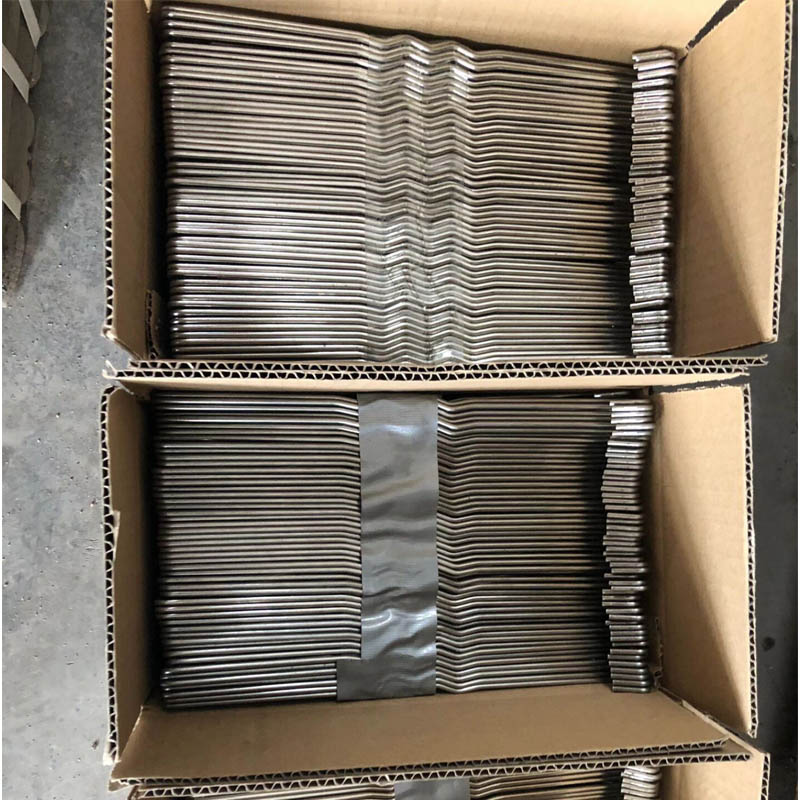
- Mobile Phone
- +8613931874955
- sales@cntcmetal.com
Effective Wall Ties for Strengthening Masonry Structures and Ensuring Stability
Understanding Wall Ties for Masonry A Comprehensive Overview
Masonry construction has stood the test of time, demonstrating remarkable durability and strength. However, the effectiveness of masonry structures heavily relies on proper construction techniques, and one of the critical elements in this regard is the use of wall ties. Wall ties play a crucial role in the stability and structural integrity of brick, block, and stone masonry walls. In this article, we will explore the importance of wall ties, their types, installation methods, and maintenance considerations.
What are Wall Ties?
Wall ties are metallic or non-metallic devices used to connect two or more wall elements. They are embedded within the masonry and serve to unite various components, such as an outer brick veneer and an inner structural wall. The primary function of wall ties is to provide lateral support under conditions of wind loads and other external forces, thereby maintaining the structural integrity of the masonry.
Importance of Wall Ties
The use of wall ties is vital for several reasons
1. Stability Wall ties provide essential stability, particularly for cavity walls. They prevent external panels from bowing or leaning away from the inner structure, thus mitigating potential failures.
2. Load Distribution By distributing loads evenly between walls, wall ties help to reduce stress on individual masonry units and enhance overall structural performance.
3. Moisture Control In cavity wall construction, wall ties facilitate drainage by allowing moisture to escape through the cavity. This reduces the risk of water infiltration and damages associated with dampness.
4. Thermal Performance Properly installed wall ties can improve the thermal performance of the wall assembly by allowing an air gap, reducing heat transfer and increasing energy efficiency.
Types of Wall Ties
Several types of wall ties are available in the market, each suited to specific applications
1. Galvanized Steel Ties Commonly used due to their strength and corrosion resistance. They are ideal for most masonry applications and come in various sizes and configurations.
wall ties for masonry

2. Stainless Steel Ties These ties are more resistant to corrosion and are recommended for environments with high moisture levels, such as coastal areas.
3. Plastic and Polymer Ties Lightweight and resistant to corrosion, plastic ties are an option for certain applications where metal ties may not be suitable, especially in chemically aggressive environments.
4. Expandable Ties Designed to accommodate movement and settling, these ties expand or contract to match the structural changes in the masonry.
Installation of Wall Ties
Proper installation is crucial to ensure the effectiveness of wall ties. Here are a few general guidelines
1. Placement Wall ties should be placed at regular intervals, typically every 16 to 24 inches vertically, and staggered horizontally for optimal distribution of forces.
2. Embedding Ties must be embedded adequately into the masonry, usually by setting them into the mortar joint or directly into the masonry units.
3. Alignment It is essential to ensure that wall ties are aligned correctly between the outer wall and the inner wall for maximum effectiveness.
4. Inspection Regular inspection of wall ties during construction is necessary to ensure compliance with building codes and standards.
Maintenance Considerations
Although wall ties are designed to last, regular maintenance is essential to prevent deterioration over time. Monitoring for signs of corrosion, misalignment, or detachment is crucial. In areas prone to significant weathering, it may be beneficial to perform periodic assessments to ensure that ties continue to provide adequate support.
Conclusion
Wall ties are indispensable components of masonry construction that ensure the stability and longevity of walls. By understanding their importance, types, installation procedures, and maintenance needs, builders, architects, and homeowners can contribute to the safety and durability of masonry structures. Properly designed and installed wall ties help protect investments in masonry construction, ensuring that these structures endure the test of time and environmental challenges. Whether you are planning a new build, a renovation, or simply seeking to understand masonry better, recognizing the role of wall ties in construction will enhance your appreciation for this essential building technique.
share:
-
Your Source for Concrete Wall Ties and Masonry AccessoriesNewsJul.10,2025
-
Unlocking the Power of Iron Wire for Every ProjectNewsJul.10,2025
-
Explore Advanced Chain Wire and Stainless Steel Mesh FencingNewsJul.10,2025
-
Discover the Benefits of Annealed Wire ProductsNewsJul.10,2025
-
Discover China Stainless Steel Wire Mesh SolutionsNewsJul.10,2025
-
Build with Confidence Using High-Performance Masonry AccessoriesNewsJul.10,2025
-
Why Sacrificial Formwork Is Redefining Underground ConstructionNewsJun.06,2025



















